One of the main touristy things to do when staying on the Yucatan Peninsula is to explore the various Mayan ruins sites. There are plenty. I’m not going to go into much detail about their history, because I’m certainly no expert, and I know y’all know how to use Wikipedia. But one thing I will say is that for a society that didn’t have beast of burden or use wheels, these folks were sure good at moving rocks around. So with that in mind, let me take you on a little tour of the sites we visited.
Muyil
Muyil is, if I’m being honest, the least impressive of the ruins we visited. There are a few buildings, most of which are fairly small. The central pyramid is cool, but honestly a bit small compared to the other sites we visited. But really, it being a small and unimpressive ended up being one of its main charms, because it’s not very popular. We went there twice and both times, there were only a couple other groups of people. That meant that if you hung around for a few minutes at any particular building, you’d get the place to yourself. Also, the jungle surrounding it was quite lovely, with small lizards lazing around in the patches of sunlight and colorful tropical butterflies flitting around here and there. These gave the place a much more tranquil feeling than the bigger ticket ruins we’d see later on.
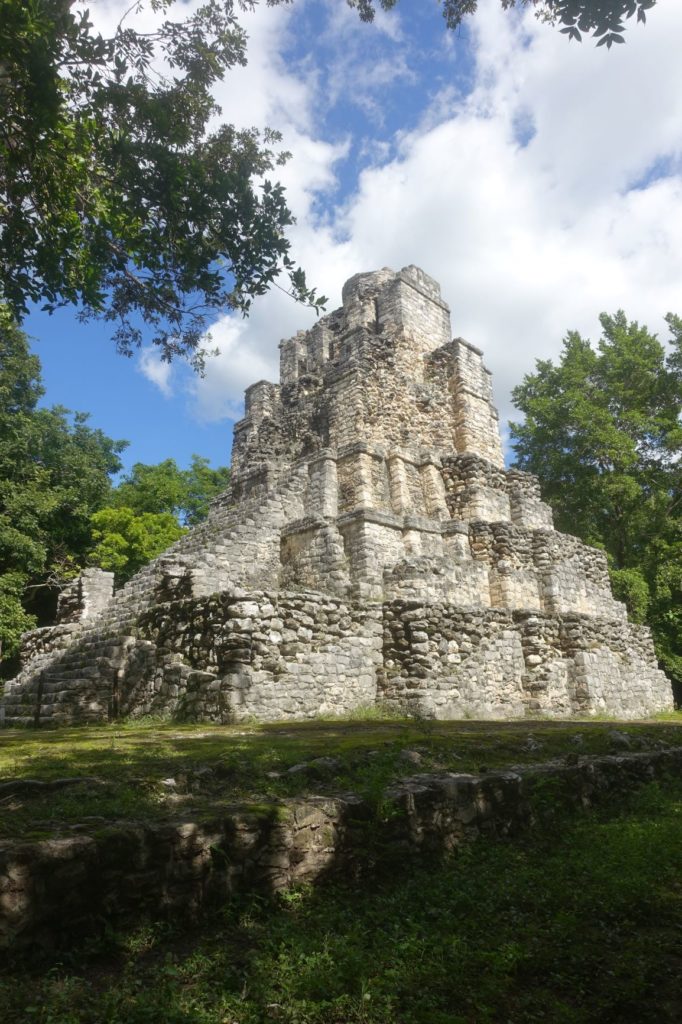
Taken by Elani
Tulum
The Tulum ruins are located, surprisingly enough, in the city of Tulum. It’s actually pretty cool to have ancient ruins in a funky beach town like Tulum. You can even catch a view of them from one of the public beaches, which only adds to the charm of the white sands and turquoise waters there.
From downtown where we were staying, they were only about a half an hour or so by bike (probably less if we’d had decent bikes, not the old beat up loaners that our Airbnb provided). We decided to bike to avoid any hassle with finding parking, and hey, how cool is it to be able to bike to ruins! Anyways, the old city of Tulum was a port town and sits on the cliffs above the beach. One of the first buildings you come to is the wind temple, which isn’t particularly large, but does have a great view.
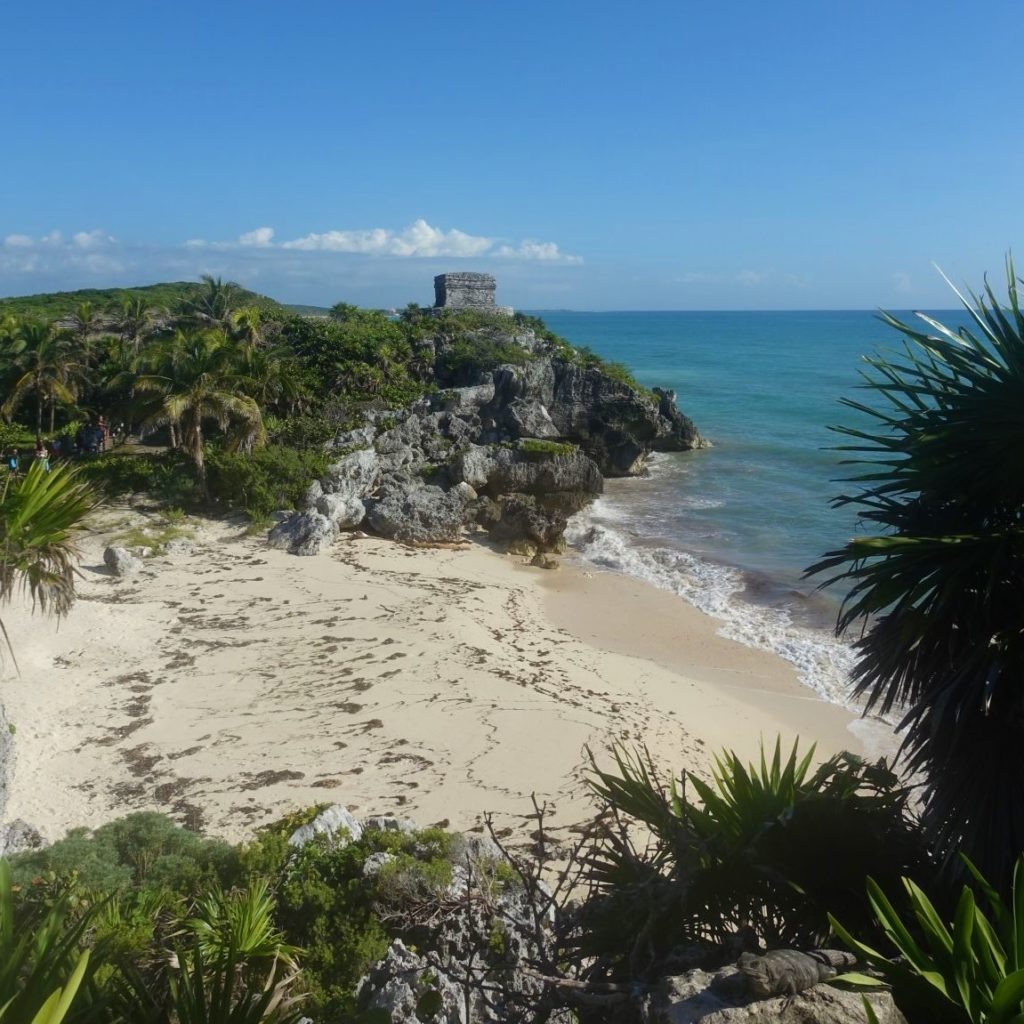
Taken by Elani
You can actually go for a swim on the beach below the ruins, but one of the downsides of the convenient location is that it’s pretty popular. And it’s not a particularly large beach, so we decided to skip that and just hit the public beach on the way home.
In additions to the crowds of human tourists, there are crowds of resident iguanas busy doing whatever it is that iguanas do. From what I could see, that mostly involved finding a particularly nice patch of sun to warm up for the day.
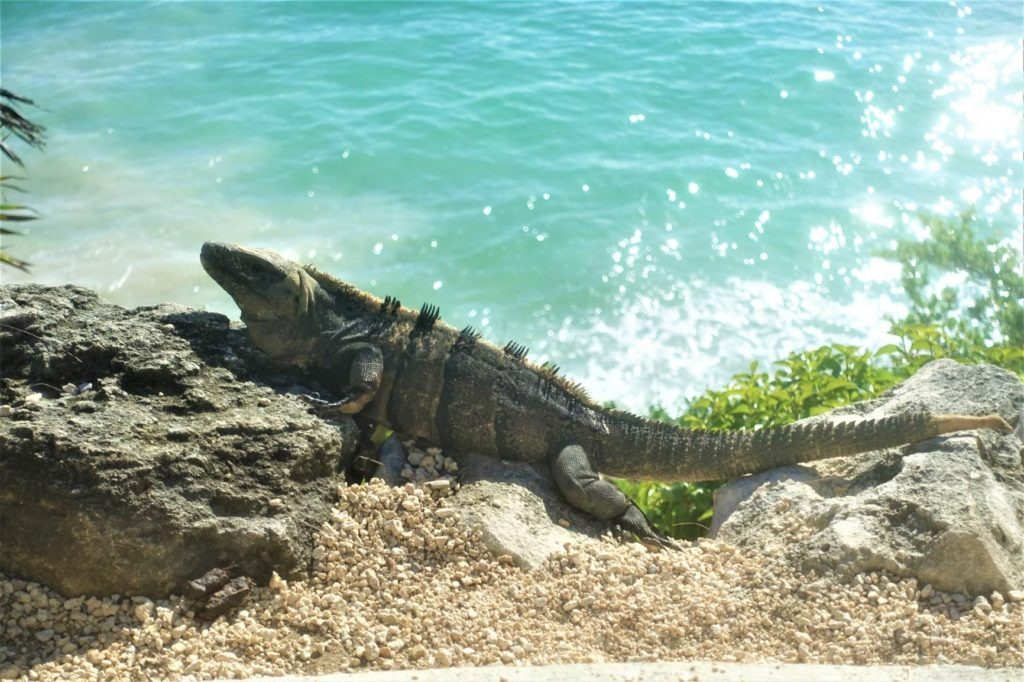
Taken by Elani
The main cluster of buildings is quite extensive. Most aren’t huge, but there are plenty of them. You can of course walk though the site and get a closer view of the buildings, though you’re not allowed to climb any (I hear this is a recent development, turns out it’s bad for ancient limestone building to have thousands of tourists tromping all over them), but the best view is on a little rise at the back of the site, where you can get a great view of the main temple and the surrounding buildings.
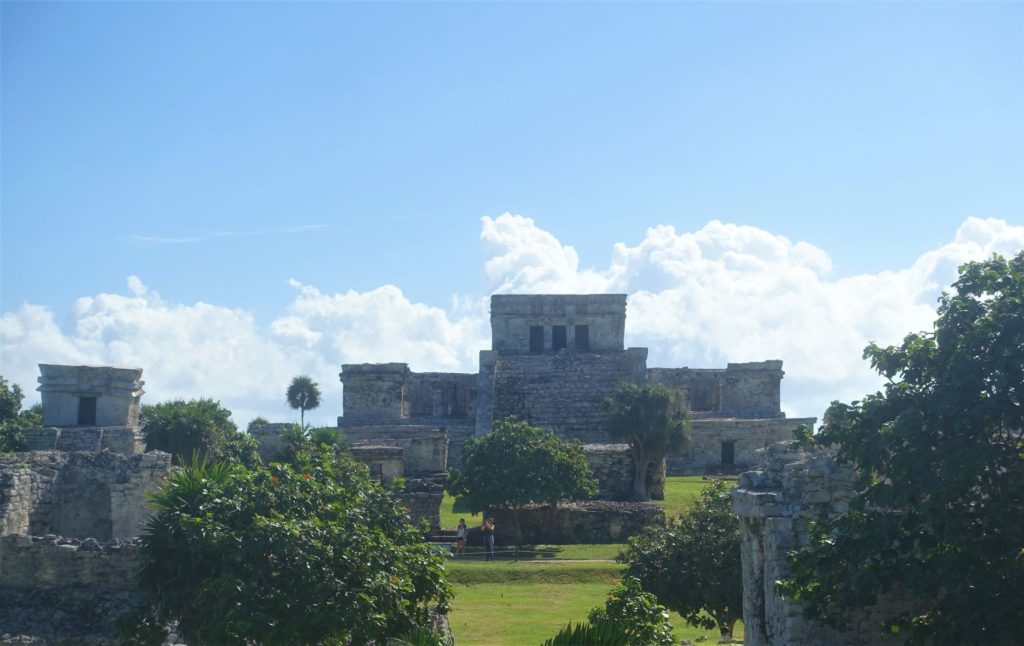
Taken by Elani
Coba
To visit Coba, it was time for a bit of drive. It was about an hour and a half from Tulum. Fortunately, renting a car in the Yucatan is surprisingly cheap, so we had one for our time there. It was a fairly pleasant drive, mostly just straight roads cut through dense jungle, interspersed with the occasional little town that all seemed to rely on a rather liberal use of speed bumps to make sure you didn’t go careening though at reckless speeds.
Coba is a rather large site. From the entrance to the site it took us, around 15 minutes to reach the main pyramid at the opposite end of it. The land around is littered with old stone buildings, including an observatory and two courts where the Mayans played their sacred ball game.
We headed straight for the main pyramid. We wanted to make sure we got a chance to get to the top before the tour buses arrived. Coba’s main pyramid is the only building you can still climb. A multitude of uneven steps polished smooth by countless feet stand between you and an excellent view of the surrounding jungle.
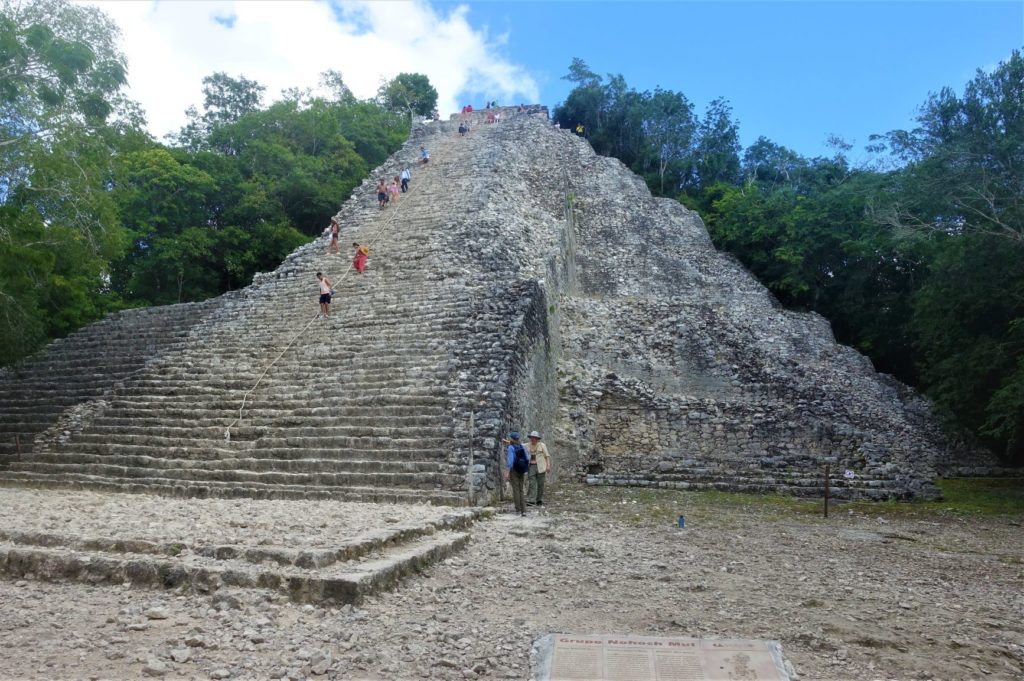
Taken by Elani
Getting to the top feels just a touch treacherous, but just enough to be exciting, and the view from the top is certainly worth it. Even though the archeological site is littered with buildings, few reach above the canopy. The picture below has me at the top getting in the way of the view. If you look just to the left of my elbow you’ll see one of the other buildings tall enough to break through the canopy (I’m pretty sure it’s the observatory). To get a sense of scale, that’s one of the closer buildings. Like I said, it’s a big place.
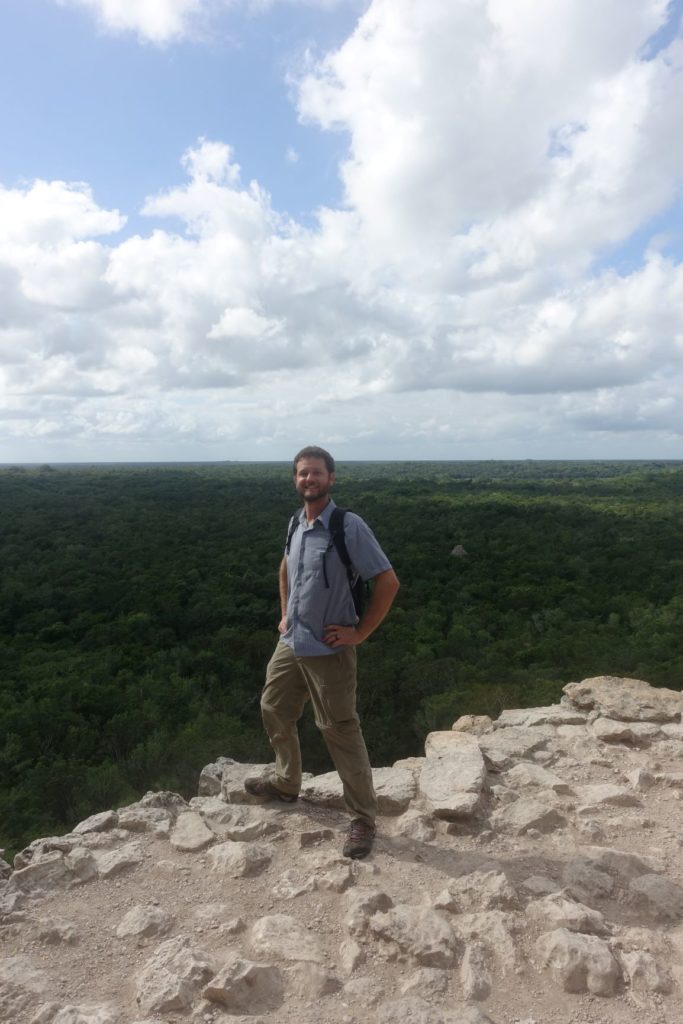
Taken by Elani
Ek Balam
Ek Balam started with another little road trip. Closer to two hours this time. As an archeological site, it was important for its well preserved stucco (there are actually some recreations of it in the anthropology museum in Mexico City), and as a tourist attraction, it benefits from being able to climb or go inside many of its buildings. Being able to walk on and around the buildings really does add something. Even though of course everything is pretty barren, it’s still cool get up close and personal with history.

the entrance of the Ek Balem ruins
Taken by me
The real show piece is the Acropolis. It’s by far the largest building there. The picture below shows the central peak, but it doesn’t capture its width. It is several times wider than you can see here, and much of it is unexcavated on the back side. Also in the picture, the sections of building covered with thatched roof are protecting rebuilt sections of the stucco façade, which may not be a departure from the antiquity of the surrounding rock, but is a good way to see what it might have looked in its heyday when it was covered with all its buildings elaborately decorated.
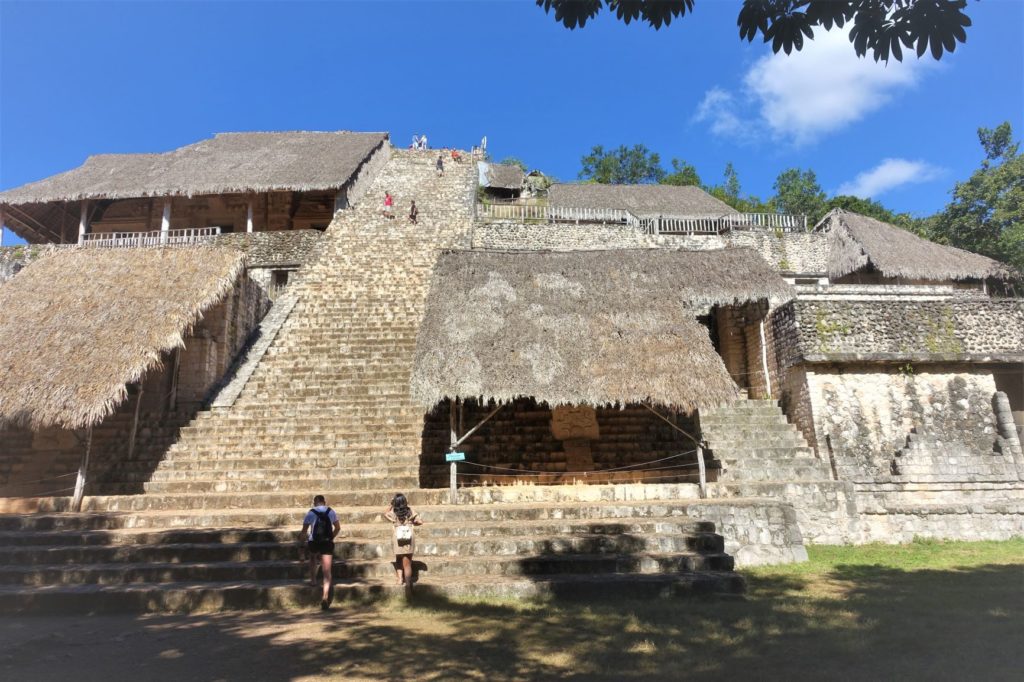
Taken my Elani
As a bonus, one of the little towns on the way there is famous for its smoked pork. On the way back, Elani and I stopped to get a taste. It is not too dissimilar to ham, but smokier, and served with tortillas and salsa. In case you were wondering, it was awesome. I think I had roughly 200% of my daily recommended sodium intake with that meal. Worth it.
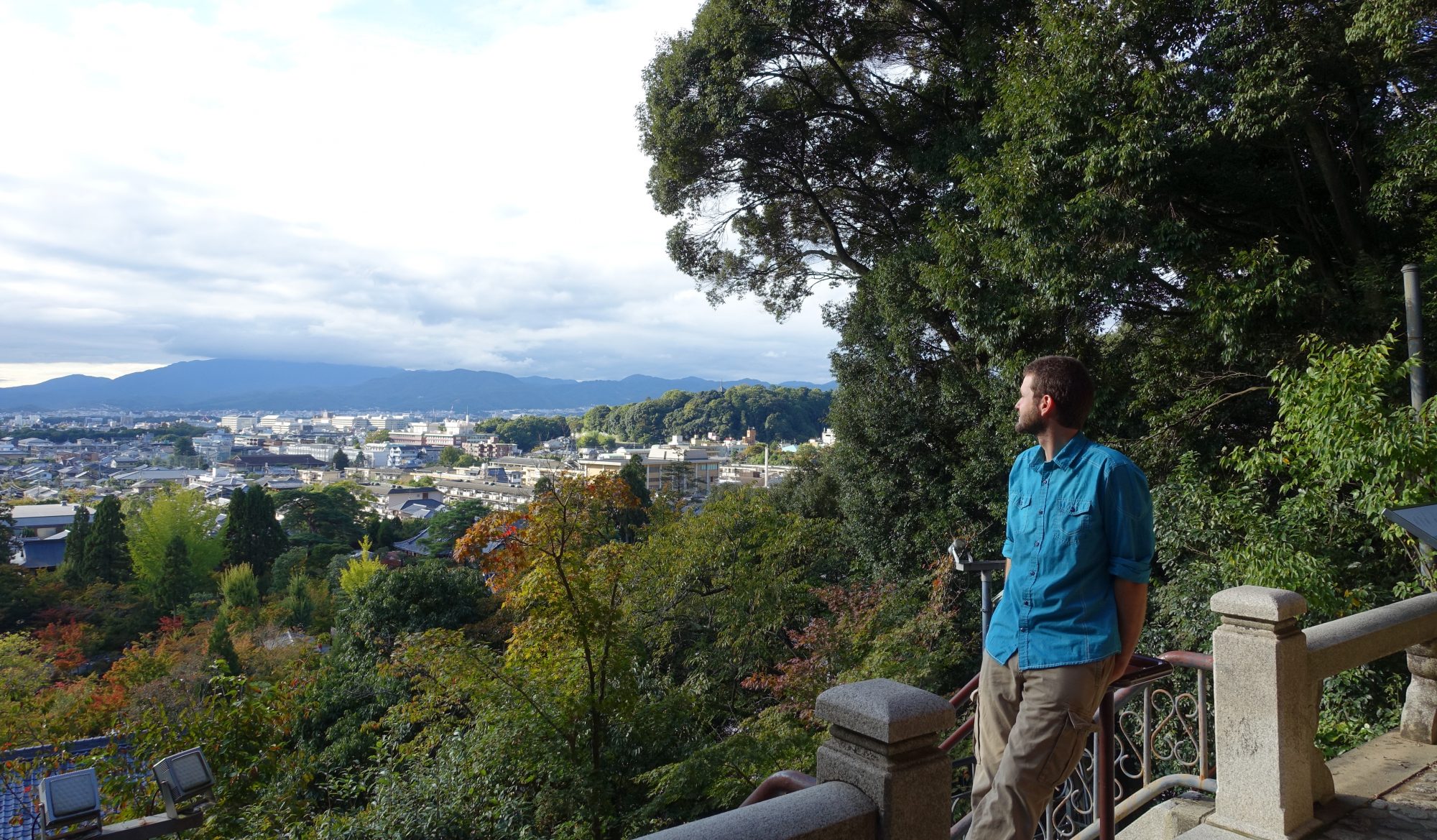
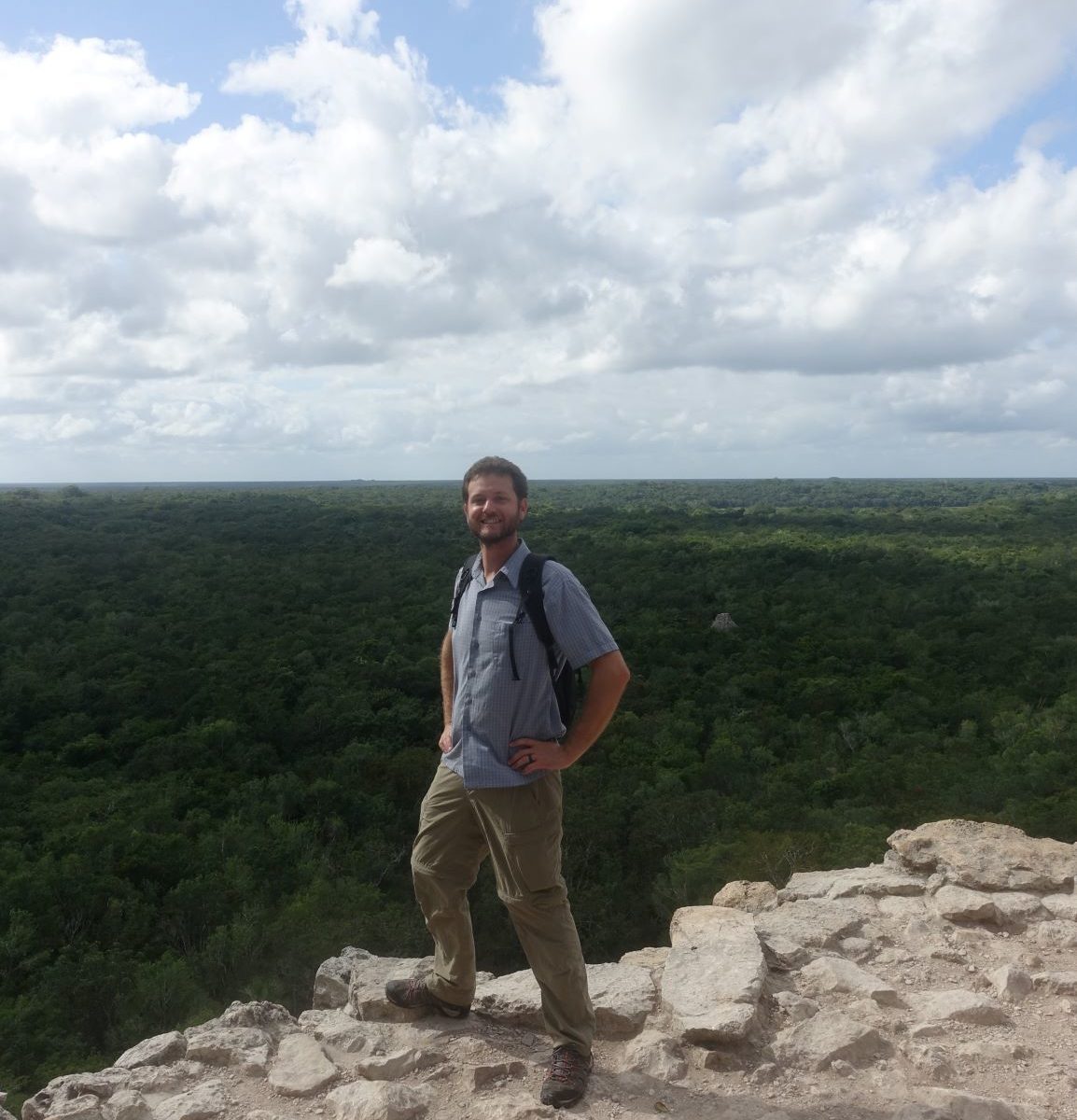
One Reply to “Exploring the Mayan Ruins”